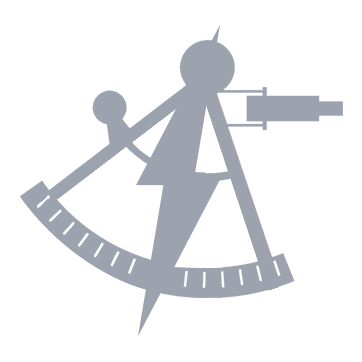Summary
Felrak Vordenna is something of an oddity in Starfleet and even among other Argosians. Despite joining the United Federation of Planets in 2273, vanishingly few of the species have chosen fleet careers. Explanations for this have been varied. Many researchers have noted that possessing a lifespan of around 250 years has left many Argosians feeling rushed by the demands of Starfleet service. Others have pointed to lack of evolutionary competition on the species’ home planet of Argosia IV. Here, the abundance of edible vegetation combined with low population growth has allowed for development of civilisations without agriculture and with little conflict over resources. A culture of sharing and generosity has developed over the millennia, along with a low tolerance for ‘risky’ behaviour.
History
When Felrak first expressed his interest in travelling off-world, he was met with great apprehension from those around him. His bask-father, Brenthesh, immediately felt compelled to change his only hatchling’s mind. Brenthesh strongly encouraged Felrak to follow in his own footsteps to become a member of the Great Conservatory. The young Argosian, perhaps motivated by an innate desire to avoid conflict, was swayed by his father’s words.
At the age of upgrowth (around 23 Federation years) Felrak retreated to the Ontogenetic Fields to undergo metamorphosis. Here he would bind himself to the rapidly growing orbosh tree, standing in meditation as its bark grew over his skin. In a matter of days, he was completely covered in a layer of bark. His vascular system would fuse with the tree’s xylem cells, infusing his blood with morphogenic sap. Cocooned within the bark, his body would be broken down into genetic soup to be reassembled into the Argosian adult form. Previously slick with mucous, Felrak’s skin hardened into woody scales. Organisms inhabiting the orbosh tree began a symbiotic relationship with him, feeding off his residual neural impulses. The moss that now grew on Felrak’s back would allow him to partially photosynthesise, drastically reducing his caloric requirement from food. Bacteria from lichens endowed him with an olfactory hyper-sense, making it possible for him to detect chemosignals from nearby individuals. Felrak emerged from the Fields a fully grown Argosian ready to make his way in the universe as he knew it.
His apprenticeship at the Conservatory prepared him well for a role in planetary governance. Planetary ecological sustainability is a core guiding principal of Argosian philosophy, and the Conservatory is the institution tasked ensuring its observation throughout society. While roughly analogous to a planetary government, in reality the Conservatory exercises very little control over day to day Argosian affairs. A planetary population of only 700,000,000 means that most communities live in smaller settlements, loosely organised but extremely cooperative. Despite Argosia’s lack of nation states or recognisable legal tradition, scientific development has occurred rapidly. This can also be attributed to the lack of societal need for food production. As no agricultural infrastructure was required, Argosian society was free to apply all its efforts to scientific and cultural endeavours. Mineral resources were extracted, followed by a short, carbon neutral industrial revolution. The introduction of computing technologies was spurred along by the addition of bio-neural circuitry, and warp travel was eventually achieved in 2120.
Contact with the interstellar community was a source of great concern for the Argosians. Compelled to protect the ecological diversity of their planet, the Conservatory at first pursued a policy of isolationism. It immediately recognised the threat posed from alien contamination. As luck would have it, their first major contact with an intergalactic power would be with the Federation in 2172. Diplomatic communications quickly established the Federation as an entity the Conservatory could trust, and Argosia IV formally became a protectorate in 2193 – a remarkably short time to formalise an agreement by Argosian standards. Out of the way in a non-strategic location, the Argosians were in no hurry at first to become a full Federation member world. Increasing tensions with the Klingon Empire in the early 23rd Century did, however, speed up negotiations.
Felrak Vordenna hatched in 2236, only three years after Argosia’s admission into the United Federation of Planets. By 2260, he had undergone metamorphosis and was ready to take up his position at the Conservatory. One evening, under a star-peppered sky, a cool wind cut through the usually humid and muggy air on the Northern Sheern continent. Gallel, his bask-mother looked up with him as they walked down the track towards home.
“It’s hard to believe there’s a community up there, and that we’re a part of it.” She was rarely the one to bring up life beyond Argosia. She smiled. Something was different.
Likewise, when his bask-mother was concerned, Felrak kept his feelings about off-world affairs to himself. Argosians were slow to open themselves up to new ideas. The Conservatory had joined the Federation for pragmatic reasons, and many of the older generation felt it should be kept at arm’s length. Those of a similar age to Felrak, the born Federation citizens, had other ideas. A whole galaxy of possibilities was waiting for them, so why shouldn’t they go out and explore? From their perspective, being Federation members simply reduced the risk involved.
“I don’t feel like I’m a part of it.” He said, voice low. “I’ve met with them. Others from the Federation. They talked of this… Starfleet, anyone can join. Anyone from the member worlds, that is.”
“Then maybe you should.” Gallel’s eyes glinted in the light of the moon.
“But fath-”
“-I’ll handle him. Argosia has changed, Felrak. We’re cautious by nature, but we’re also scientists. There’s more to learn out there.” She cast her gaze out towards the inky sky.
With the support of his bask-parents, Felrak graduated from the Administrative Wing of the Conservatory in 2275. He was free to do as he pleased to find his place in Argosian society. During his fifteen years in the Wing, he had grown particularly attached to work in the off-world affairs office. In fact, he was soon spending most of his time there assisting with the introduction of alien dignitaries to Argosia, treaty negotiations and trade development. Few were then surprised, when in his graduation year he was given a position as aide to Drend Brelgrenthal, Argosian representative to the Federation Council.
San Francisco was fast. Gone were the tightly interlocking trees and carefully grown habitat forms. Humans had once made nature subservient to their needs, and while ecological sustainability had been achieved on Earth, their architecture echoed the times of old. On Earth, Felrak learned more than he ever thought possible of the alien cultures that made up the Federation, and many that didn’t. Ancient texts, Vulcan poetry, Benzite geostructural carvings, Felrak absorbed as much of it as he could. Together with the other Argosian delegates on Earth, he worked to promote further integration between his home planet and the rest of the Federation. The Argosian institute of bio-neural studies was founded in 2283, for which Felrak played a crucial role in securing resource allocation. He appreciated the Federation’s pursuit of scientific study, finding it admirable. However, in Felrak’s view the risks taken in the name of science were often unacceptable. In the mid-2280s he learned of the Genesis Device and its destructive capability. He spent the next years writing a series of articles for publications across the Federation. In them, he urged the scientific community to look favourably upon planetary ecologies in their unique forms, rather than seeking their transformation into something more comfortable for humanoid life.
By 2398, Drend Brelgrenthal had passed. Felrak had risen to the post of Deputy Representative to the Federation Council. His public writings, however, had left him few supporters back on Argosia. The political establishment there, although by now more accepting of foreign political and economic influence, still sought to keep a low profile on the galactic stage. Felrak was recalled to Argosia, and he thus promptly resigned from his post. He wasn’t sure if it was the pace of life on Earth that had changed him, or simply the obstinacy of the Argosian government. Either way, his appetite for risk found itself growing larger by the day.
Felrak took up a post at the University of Manitoba, researching and lecturing in bioethics. His publications while working here centred on nano-sentience and the ethics of terraforming technologies. Areas of his work that also received interest included the growth and training of bio-neural processors, the limits of their self-awareness, and their integration with EPS starship systems. It was the latter part of this research that caught the attention of Starfleet. He was approached by the Starfleet Office of Science Ops in 2323, shortly after the Federation’s first contact with the Cardassian Union. He had been buried in his work for over two decades, not an insignificant stretch of time, even for an Argosian. Faced with yet another change of direction, he did what any reasonable sentient being would do, and called his mom.
“They’re seeking new ways to integrate bio-neural technology on Starfleet ships.” He could see the deep cracks in her skin. It seemed like there were more every time now. She was distracted, half listening, as she prepared a melwart fungus meal.
“Mmmmhmmm, well, it sounds exciting, Felrak.” She smiled up at him. “Things sure do move fast over on Earth. To think of you… Flying around on a starship, pretty risky don’t ya think?”
Felrak chuckled, “It had occurred to me.” He scratched his chin with his mossy, scaly hand.
“Still, if any Argosian was gonna go ahead and join Starfleet, it sure wouldn’t surprise us if it was you.”
“I won’t be joining Starfleet though, I’ll be part of a research team on USS Ambassador.” Felrak frowned.
On hearing this, his bask-father butted his head in from the left of Gallel’s viewer. “Whaddaya mean? You’ll be on one of those ships, you’ll be out there with the Klingons, dealing with Cardassians fighting! Don’t think we don’t know what’s going on!”
“Ahhh get outta here!” Gallel shoved Brenthesh back out of the picture. “You know what to do, Felrak. You’re already doing it. We’ll be here waiting for you when you get back.”
A seed had been planted that day. When he met with Captain Krex at Helaspont Station, Felrak quickly became accustomed to starship life. He found himself taking on roles outside of his official research area. While operating near volatile Tzenkethi space, he discovered he was not afraid. Many friends came and went, and it felt like more happened to him in those five years than in the preceding twenty. His publishing output had slowed, but he’d seen what people were capable of, he’d seen what he was capable of himself. The pace of life here was faster even than that on Earth. Every waking moment brought with it activity. It was enough for him to make a clean break from the Argosian mould, and to change the course of his life forever.
With the approval of Captain Krex, it was decided that Felrak’s experience with starship systems, Starfleet protocols and research output were enough to exempt him from a large portion of Starfleet Academy training. He was given the provisional rank of Ensign and allowed to undergo final assessments for duty while still serving aboard the Ambassador. Upon completion in 2329 he was permanently assigned to the ship at the rank of Lieutenant Junior Grade.
In 2334, he bade farewell to Captain Krex and the crew of the Ambassador as the ship was given fully operational status along with a prefix change from NX to NCC. He was assigned to the newly launched Oberth class USS Yosemite as Chief Science Officer. Its first mission would be to chart a previously unexplored region of space that would come to be known as the Badlands. Rapidly rising tensions with the Cardassian Union would put the lightly armed Yosemite frequently on the run.
It was around this time that Felrak began to consider life in Starfleet beyond scientific research. He was promoted to Lieutenant and posted aboard the USS Dragon, again as Chief Science Officer. Nine years aboard the Dragon were spent touring the outer star systems beyond Talarian Republic space. Felrak was involved in first contact with the J’naii in 2341, writing a series of reports that would become working documents for Starfleet’s later diplomatic mission to their home world. The Dragon would go on to encounter the Mekai energy vampire, a space dwelling organism that fed on the energy of starships ensnared in its dampening field.
By 2347, tensions with the Cardassian Union were beginning to rise. Now aboard the USS Progress, opportunities for research were few and far between as the ship was frequently diverted to head off Cardassian border incursions. It was here that Felrak became more heavily involved with ship operations. His earlier research on bio-neural interfacing had begun to bear fruit, and contacts at Starfleet Science Ops had allowed him to get his hands on some of the working prototypes. Working closely with the Engineering department, and with strong encouragement from Captain Emmendus Tibb, Felrak was able to refit the ship’s critical systems with some of the first bio-neural processors ever produced. The small Mediterranean class ship was able to hold its own in several engagements with the Cardassians, allowing for delaying actions to be fought and reinforcements to arrive. For his efforts, Felrak was promoted to Lieutenant Commander.
Cardassian border conflicts continued to simmer, but Felrak’s papers on bio-neural integration had caught the attention of Starfleet once again. He was contacted by the Hurkos III Bioresearch Insitute and offered the position of Starship Systems Integration Department Lead. Having been involved in a few too many combat situations for his liking over the preceding decade, Felrak welcomed the change of pace. It was 2361, five years into his tenure at the institute, when he got the call he had been dreading. His bask mother and father, at the ages of 257 and 259, had passed away in their sleep. For Argosian parents bonded for as long as Felrak’s, a great deal of the symbiotic lichens and bodily flora come to be shared between the couple. In their case, floral death resulted in the hosts’ no longer being able to receive the photosynthetic energy that enables the extended Argosian lifespan. The stomach and digestive tract often become emaciated through age and lack of use, well beyond the abilities of current cell regeneration therapy. The sudden drop in caloric input from the symbiosis then results in multiple organ failure; a mercifully fast process.
Felrak was granted an immediate leave of absence, returning to Argosia. There he began a ten year mourning period. He roamed across the Bolr’yd Plains, taking shelter within the canopies of the Lorel Forests. Fren-figs, churrn bulbs and melwort fungus sustained him. He eschewed his prior identity, career and work. The rain soaked into his scales. The sun scorched the thin, furry tufts on his scalp. He sought solace in reading, delving into the Vulcan classics of which he had grown fond. He deliberated his return, reasoning to himself that nothing now materially bound him to the universe. Research no longer inspired him. He paid the Conservatory a final visit in 2372. There he found Argosian discourse had taken a drastic turn. A new threat was being spoken of in hushed tones, unfamiliar to Felrak. It seemed a new threat was on the rise, one that went by the name of The Dominion. It was said they were from the Gamma Quadrant, and that they had allied themselves with the Cardassian Union in an attempt to conquer then Federation in its entirety. Felrak was shaken to his core, his existential chain of thought shattered. He returned to the Northern Sheern to bid his family home a final farewell. The clouds hung a heavy grey in the sky as he boarded the Type 11 shuttle. Grass flattened against the muddy ground, engines hummed an intense tone and Felrak Vordenna was again carried towards the stars.
Reactivating his commission was a straightforward process, hastened by Starfleet’s need for experienced personnel as the Dominion War got underway. His research had been continued on Hurkos III in his absence, and upon his return Felrak saw that the results had advanced far beyond his expectations. All Federation vessels were now fitted with bio-neural gel packs as standard, and the phasing out of isolinear circuitry had begun. By 2374, ships were being brought out of mothballs increasingly quickly. Felrak’s experience with ship computer system overhauls was immediately vouched for by previous colleagues and, despite his latest publications being now over a decade old, he was assigned to oversee the emergency refits of ships from surplus depots across the quadrant. Until the end of the war, Felrak became part of a team assessing the refit potential of ships in storage. If it could fly, it was fair game. Mirandas, Constellations, Excelsiors were all reactivated, skeleton-crewed and flung at the Dominion. It wasn’t pretty, but it worked. By the end of the war, Felrak had pored over countless schematics, developing refit models for systems once considered hopelessly outdated. The only problem was that he was now out of a job.
In 2377, there was still something of a shortage of experienced personnel. While initially it had been a welcome break after the relentless pace of the war, returning ships to mothballs had grown tiresome. Felrak was itching to get back to the practical side of starship systems. When Admiral Emmendus Tibb sought him out for another experimental starship posting, Felrak jumped at the chance. The USS Luna was newly completed and in need of a Chief Engineer.
Felrak’s tour aboard the Luna was marred by a catastrophic ion feedback pulse that resulted in the deaths of four engineering personnel. An investigation into the cause of the accident found that gravimetric shear forces from the polarisation matrix had been allowed to build up well beyond safe operating parameters. Felrak and ship’s designer Xin Ra-Havreii developed a close working relationship in their five years aboard Luna. When Ra-Havreii took responsibility for accident’s occurrence, Felrak joined with many of the crew in stating it had been impossible to predict. Still, Ra-Havreii chose to leave the Luna and the experience weighed heavily on Felrak’s mind. Keeping the ship running smoothly, he tinkered here and there with various subsystems. After five years on the ship, Captain Fujikawa recognised that Felrak was spinning his wheels and in need of progress. He was the first to suggest Felrak make the transition to command.
The bridge officer examination was demanding, but Felrak had been around in the fleet long enough to intuit his way through even the more challenging sections. As Executive Officer aboard the USS Pleiades, his work was as varied and fast paced as he’d ever experienced. He was physically out of his comfort zone too. This was a real mission of exploration, with diplomacy to conduct and wonders to behold. The Century Class was quite the ship, state of the art and possessing technology far more advanced than anything Felrak could had imagined in his earlier years. For ten years, he toured the furthest reaches of the known galaxy. Six first contact missions were conducted on a journey of anomalies, gods, civilisations and entities for which new classifications were required. Felrak conversed with B’Gyr’Tyn, the Great Progenitor of Greneweyr. He telepathically fused with the Kolathi spirits of Lindos Prime. He stood together with the last survivors of the Avorn Ringworld as their home imploded under its own weight. Still, he wanted more, and he would get it.
As Captain of the USS Ahwahnee, Felrak is only beginning to find the meaning of what it means to embrace adventure. Risk was never the Argosians’ business. What comes naturally to many other Federation species has come to Felrak slowly, and sometimes painfully, over the 163 years of his current existence. He has broken free from mental constraints and from the conditioning, some evolutionary, some social, some personal, that has held him back. What Federation ideals have done for him, he hopes now to do for other species. For now, at least, Felrak Vordenna has found his true place in the universe.
Service Record
| Date | Position | Posting | Rank |
|---|---|---|---|
| 2260 - 2275 | Apprentice | Argosian Great Conservatory |
 Cadet Cadet |
| 2275 - 2298 | Aide to the Federation Representative | Council of the United Federation of Planets |
 Cadet Cadet |
| 2298 - 2323 | Professor of Bioethics | University of Manitoba |
 Cadet Cadet |
| 2323 - 2328 | Advanced Starship Design Bureau Liaison | Starfleet Science Ops |
 Cadet Cadet |
| 2328 - 2329 | Officer in Training | USS Ambassador |
 Ensign Ensign |
| 2329 - 2334 | Science Officer | 2334 |
 Lieutenant Junior Grade Lieutenant Junior Grade |
| 2334 - 2339 | Chief Science Officer | USS Yosemite |
 Lieutenant Junior Grade Lieutenant Junior Grade |
| 2339 - 2345 | Chief Science Officer | USS Dragon |
 Lieutenant Lieutenant |
| 2345 - 2347 | Chief Science Officer | USS Progress |
 Lieutenant Lieutenant |
| 2347 - 2356 | Chief Science Officer | USS Progress |
 Lieutenant Commander Lieutenant Commander |
| 2356 - 2361 | Starship Systems Integration Department Lead | Starfleet Bioresearch Institute, Hurkos III |
 Lieutenant Commander Lieutenant Commander |
| 2361 - 2372 | Leave of Absence | Argosia |
 Cadet Cadet |
| 2372 - 2373 | Starship Systems Integration Department Advisor | Starfleet Bioresearch Institute, Hurkos III |
 Lieutenant Commander Lieutenant Commander |
| 2373 - 2377 | Refit Assessment and Coordination Officer | Advanced Starship Design Bureau |
 Lieutenant Commander Lieutenant Commander |
| 2377 - 2382 | Chief Engineer | USS Luna |
 Lieutenant Commander Lieutenant Commander |
| 2382 - 2392 | Executive Officer | USS Pleiades |
 Commander Commander |
| 2392 - 2399 | Commanding Officer | USS Ahwahnee |
 Captain Captain |

 Bravo Fleet
Bravo Fleet






